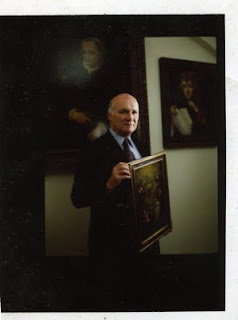Wednesday, October 28, 2015 -  COMCOL,ICOM,UNESCO,Virginia Curry
COMCOL,ICOM,UNESCO,Virginia Curry
 No comments
No comments
 COMCOL,ICOM,UNESCO,Virginia Curry
COMCOL,ICOM,UNESCO,Virginia Curry
 No comments
No comments
Reporting from UNESCO ICOM COMCOL 2015 Annual Conference in Soul, Korea
COMCOL is the International Committee for Collecting of the International Council of Museums (ICOM) which aims to deepen discussions, and share knowledge on the practice, theory and ethics of collecting and collections development.
 This year ICOM Council on Museum Collecting (COMCOL) is hosted by the National Folk Museum in Seoul, Korea.
This year ICOM Council on Museum Collecting (COMCOL) is hosted by the National Folk Museum in Seoul, Korea.
The call for papers for this conference invited papers is “Collecting and Collections: The Politics and Praxis of Social, Economic and Intellectual Sustainability”
Speakers participating in this conference have gathered from as far away as the Netherlands, Zambia, Brazil, England and myself, from the United States.
On our first day of this conference, we toured the Gyeongbokgung Palace, and were welcomed by an extremely knowledgeable docent at the National Folk Museum in the same complex as the Palace before beginning our conference schedule for the day. The group also received the Gyeonggido Dodanggut, which is a shamanic ritual of community, designated as Korea’s Important Intangible Heritage #98, held in Suwon, Incheon and other areas of Gyeonggi provence to wish for the well-being and prosperity of a village. This particular ritual consists of two parts: telling the origin and history of village guardians and praying for safety and longevity of the village and its residents.
The President of COMCOL, Léontine Meijer-van Mench (Germany) , Deputy Director at Museum Europäischer Kulturen (Museum of European Cultures) Staatliche Museen zu Berlin - Preußischer Kulturbesitz initiated session one with a presentation, “What does sustainability mean for institutional collecting?”
Keynote speaker Kidong Bae (Korea), ICOM chair of the National Committee of Koreaand former President of the Korean Museum Association; now, Professor of Archaeology in the Department of Anthropology, Hanyang University and Director of the Jeongok Prehistory Museum, Gyounggy Province; Seoul spoke about the History of Collections and Museum Development in Korea.
In the afternoon session Yukiko Shirahara (Japan) Chief curator at the Nezu Museum presented a thought provoking paper on “Addressing the Dilemma of Sustaining Museums and Collections in an Economic Downturn”. The final paper presented by Ho Seon Riw (Korea) concerned the “Future-Oriented Collecting Policy of the National Hangeul Museum. “Hangeoul” is the unique writing style of Korea.
 In the closing of the first day of the conference, students of “Gayatori” performed Gayageum byeonchang, folk songs accompanied by the traditional Korean zither-like instrument the Gayageum. These students are officially appointed to maintain this important intangible cultural property. Maintenance of “intangible cultural property” is ICOM’s priority #23. Gayatori plays Korean traditional musical instrument which includes both 12 stringed and 25 strings in performance, accompanied by flute and choral voices of the players.
In the closing of the first day of the conference, students of “Gayatori” performed Gayageum byeonchang, folk songs accompanied by the traditional Korean zither-like instrument the Gayageum. These students are officially appointed to maintain this important intangible cultural property. Maintenance of “intangible cultural property” is ICOM’s priority #23. Gayatori plays Korean traditional musical instrument which includes both 12 stringed and 25 strings in performance, accompanied by flute and choral voices of the players.
This reporter will present in the next day’s session a paper titled, “Renaissance at the Academy: The Rebirth of Connoisseurship and the Examination of the Object”




















